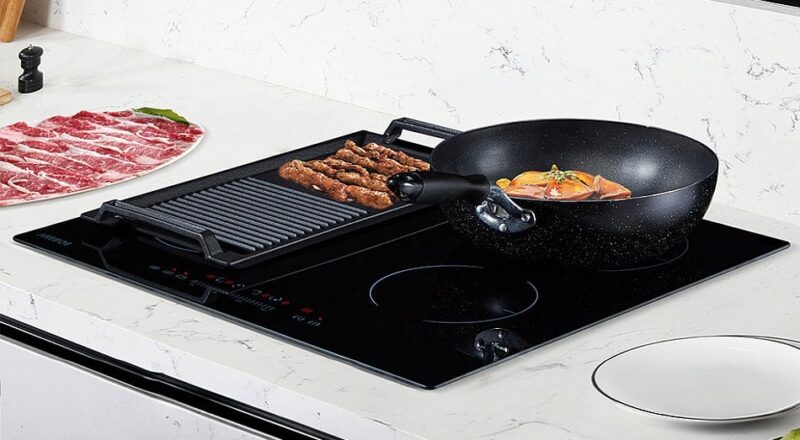In today’s fast-paced world, cooking efficiency is crucial, especially for kitchen professionals who demand precision and speed. The integration of induction cooktops in modern kitchens has revolutionized the way we cook, offering rapid heating and enhanced control. One question that often arises is how cast iron reacts to induction boost mode. Understanding this interaction is key to making the most of these kitchen essentials.

What is Induction Boost Mode?
Before diving into the specifics of how cast iron reacts to this feature, it’s important to understand what induction boost mode is. This mode is designed to provide a quick surge of power to the cooktop, allowing for rapid heating. It’s particularly useful for tasks like boiling water or searing meat, where time is of the essence.
Why Use Cast Iron with Induction?
Cast iron cookware is a favorite among chefs and home cooks alike due to its excellent heat retention and even cooking. When paired with an induction cooktop, it offers a unique combination of rapid heating and consistent temperature maintenance. However, it’s essential to know how this combination works to avoid common issues like uneven browning.
Benefits of Using Cast Iron
The benefits of using cast iron are numerous. It provides even heat distribution, which is perfect for slow-cooked meals. Its durability and non-stick properties improve with use, making it a long-term investment for any kitchen.
Induction Compatibility
One of the reasons cast iron is compatible with induction cooking is due to its ferrous metal composition, which allows it to interact with the magnetic field generated by the cooktop. This interaction is what enables the induction boost mode to work effectively.
How Cast Iron Performs in Boost Mode
When you activate the induction boost mode, the energy transfer to the cast iron pan is significantly increased. This results in faster heat-up times compared to traditional stovetops. However, this rapid heating can sometimes cause issues with cold spots if the pan is not correctly positioned.
Heat Distribution
While cast iron holds heat well, the initial heat distribution can be uneven if the pan is not placed properly. Ensuring the pan is centered on the induction ring is crucial for optimal performance. More details can be found on our page about matching pan size.
Potential Challenges
Despite its advantages, using cast iron on an induction cooktop in boost mode can present challenges, such as uneven heating or the pan becoming too hot too quickly, which might lead to smoky conditions in the kitchen.
Optimizing Cast Iron Use on Induction
To make the most out of your cast iron cookware on an induction cooktop, consider the following tips:
Preheat Gradually
Instead of immediately using the boost mode, start by preheating the pan on a lower setting. This gradual warming helps prevent thermal shock and promotes even heating.
Monitor Temperature
Keep a close eye on the temperature. Induction cooktops heat very quickly, so it’s easy to overheat the pan if you’re not careful.
Use the Right Pan Size
Ensure your cast iron pan matches the size of the induction zone. This alignment prevents energy waste and ensures even cooking.
Conclusion
Understanding how cast iron reacts to induction boost mode allows kitchen professionals to harness the full potential of their cookware. By being mindful of the unique properties of both the cooktop and the pan, chefs can achieve excellent results with every meal. For more insights on using cast iron with induction cooktops, check out this informative external resource.

FAQs
Can I use cast iron on any induction cooktop?
Yes, as long as the cast iron pan is flat, it should work on most induction cooktops.
What are the best practices to avoid overheating?
Start with a lower heat setting, gradually increase the temperature, and always monitor the pan’s heat closely.
Do induction cooktops damage cast iron?
No, but rapid temperature changes can cause warping, so it’s important to heat the pan gradually.
This article contains affiliate links. We may earn a commission at no extra cost to you.

